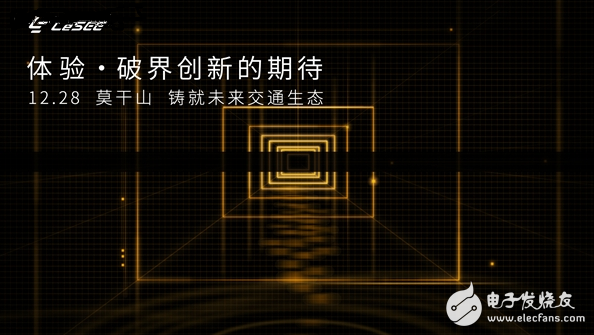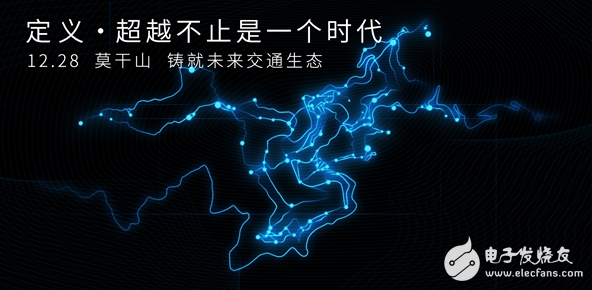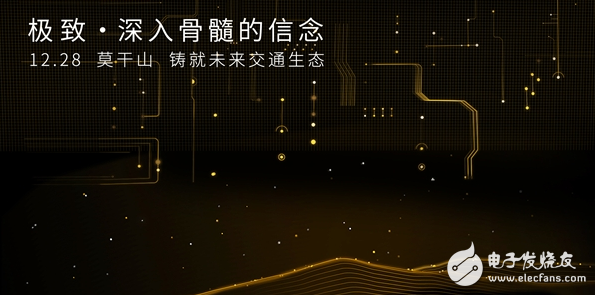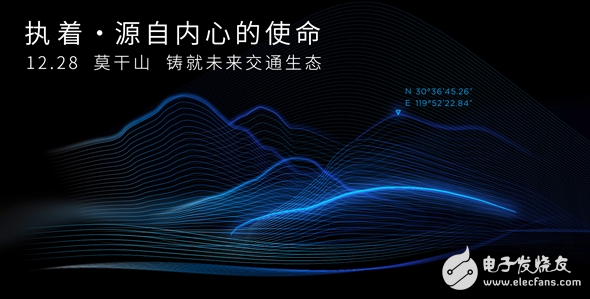In August, LeEco LeTV officially announced that LeTV Eco-Auto Industry Park was settled in Moganshan, Deqing County, Zhejiang Province. In late December, LeTV's official microblogging posters were issued, and once again focused on the eco-car industry park under Moganshan, which triggered media attention. Many people also speculated that this may be a prelude to the official start of the Leshi Eco-Auto Industry Park.

The series of posters issued by LeTV Supercar officially filled with the sense of science and technology. The theme of "the persistence", "mission" and "belief" in the theme of the poster is full of the mission and determination to change the automobile industry. "Definition", "Beyond" and "Extreme" reflect The project's forward-looking and industry-leading significance. According to the plan, LeEco plans to build the first LeTV Eco-Auto Industry Park covering the advanced manufacturing, ecological display and sightseeing experience of smart Internet electric vehicles under the Mogan Mountain in Deqing, Zhejiang. This will be the leading "Internet +" thinking in China and the world. The breakthrough and beneficial exploration of transforming the traditional automobile manufacturing industry will become a model for the upgrading and transformation of China's automobile manufacturing industry in the industrial 4.0 era.

In the context of the Internet era, the integration of the upstream and downstream industry chains of automobiles is rapidly deepening, and the industrial chain segmented by the traditional automobile manufacturing industry is being affected. Internet thinking has accelerated the pace of industrial innovation, and has provided a new mindset for integrating automotive production links and improving industrial efficiency. For the future of automobile manufacturing, the Internet, big data, cloud platform, artificial intelligence, and even intelligent hardware, applications, content and other aspects will become key elements, which is the advantage of LeEco LeTV. Based on LeEco's Internet and cloud technologies, the management system of the future plant can be further optimized, and the logistics chain, manufacturing chain, and consumer chain will be further opened to achieve end-to-end integrated production. At the same time, LeTV's hardware strength will also provide comprehensive support for manufacturing control processes and user experience.

Under the support of the world's first complete open-loop closed-loop ecosystem of “platform + content + hardware + software + applicationâ€, LeTV will use Internet technology as the core to create a vertically integrated ecosystem, break the industrial boundary and achieve cross-border innovation. For LeTV Supercar, the eco-car industry park under Moganshan is not only an intelligent and automated automobile manufacturing base. LeTV Eco-Auto Industry Park will adopt UP2U (User Planning to User) mode to present users. The world's top car manufacturing process tour experience. Based on the plan, LeTV Supercar should build a development engine based on local and radiating peripherals under Moganshan, and form an open Internet eco-region centered on user experience around the intelligent Internet electric vehicle industry, and shape the Leshi Eco-Auto Industry Park into A super landmark that blends nature, technology, art and the Internet.

On December 28th, under the Mogan Mountain in Deqing, Zhejiang Province, LeTV Supercar will build the future transportation ecology and reshape the automobile industry in the industrial 4.0 era. The last two days will count down and look forward to it!
The pigtail refers to an optical fiber or optical cable with an optical fiber connector installed at one end and an optical fiber or optical cable at the other end. Divide an optical jumper into two to become two optical pigtails. Optical pigtails are usually used for the end of the optical path (such as the actual test result box of the terminal point pair, the splice tray in the wiring equipment, etc.). Or the extraction of optical devices (such as optical splitters, lasers, detectors, etc.). The pigtail length is usually no more than 2 meters.
Same as the optical jumper, when the connecting wire is an optical cable (mostly indoor optical cable), it is called an optical fiber pigtail, and when the connecting wire is an optical fiber (usually a tight-buffered optical fiber), it is called an optical fiber pigtail. There is no special product standard for optical pigtails. Most buyers and sellers switch to "arbitrary type" in the form of optical patch cords when they deliver. The quality acceptance is the same as optical patch cords, which also apply optical fiber movable connector standards.
Pigtails are divided into multi-mode pigtails and single-mode pigtails. The multimode pigtail is orange, the wavelength is 850nm, the transmission distance is 5Km, and it is used for short-distance interconnection. The single-mode pigtail is yellow, with two wavelengths, 1310nm and 1550nm, and transmission distances of 10km and 40km, respectively.
Fiber is an important component of the optical communication system, which is mainly used to realize the two functions of the interconnection of the optical ports between the devices and the interconnection of the device and the fiber core of the optical cable. Different from conventional cables, the pigtail core wire has the characteristics of easy breakage and weak tensile performance, and there is no mature on-site processing plan for the interface components, and it is impossible to make a pigtail with a suitable length on site according to the actual distance. Therefore, in practical applications, the pigtails are usually factory-processed and manufactured according to a certain nominal length series. When installing and constructing on site, engineers can choose pigtails that are longer than the actual distance. Because pigtails have the characteristics of discretization and easy damage, pigtail reeling is the core link in the installation, return and storage of pigtails.
The inner core of the pigtail uses silica glass filaments to carry the optical path. The body is fragile and easy to break. The main line is usually a 48-core ADSS optical cable. These pigtails need to be sheathed in a corrugated tube and placed in the floor compartment or cable sandwich. There is no effective tool assistance in the traditional pigtail threading method, and the operation and maintenance personnel adopt the traditional brute force method to pass the pigtail through the corrugated tube, which causes more fiber jumper damage and high probability of service interruption.
Different Connector Pigtail, Connecter Color-coded Pigtail, Connecter Bunch Pigtail, FC Waterproof Pigtail, Ribbon Fanout Pigtail
Shenzhen GL-COM Technology CO.,LTD. , https://www.szglcom.com